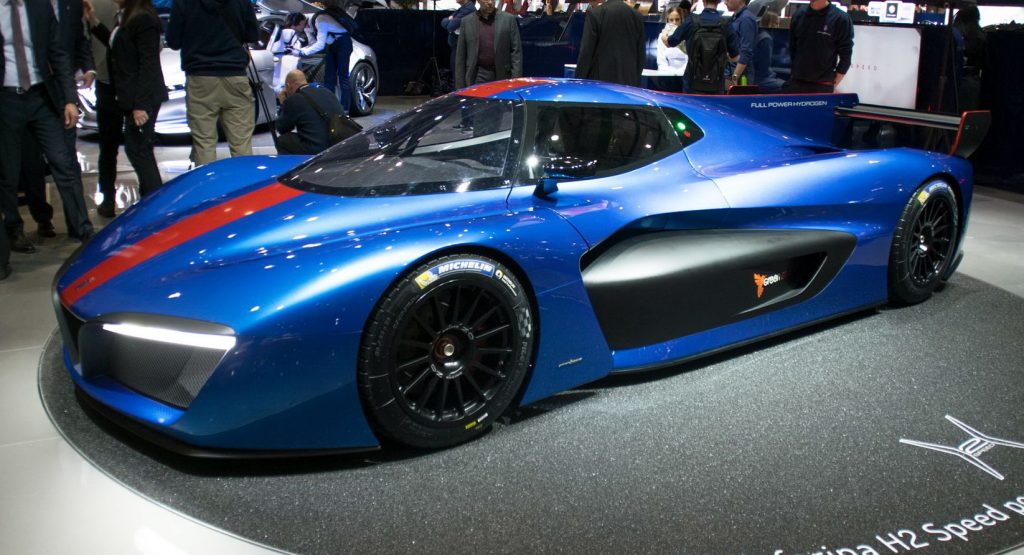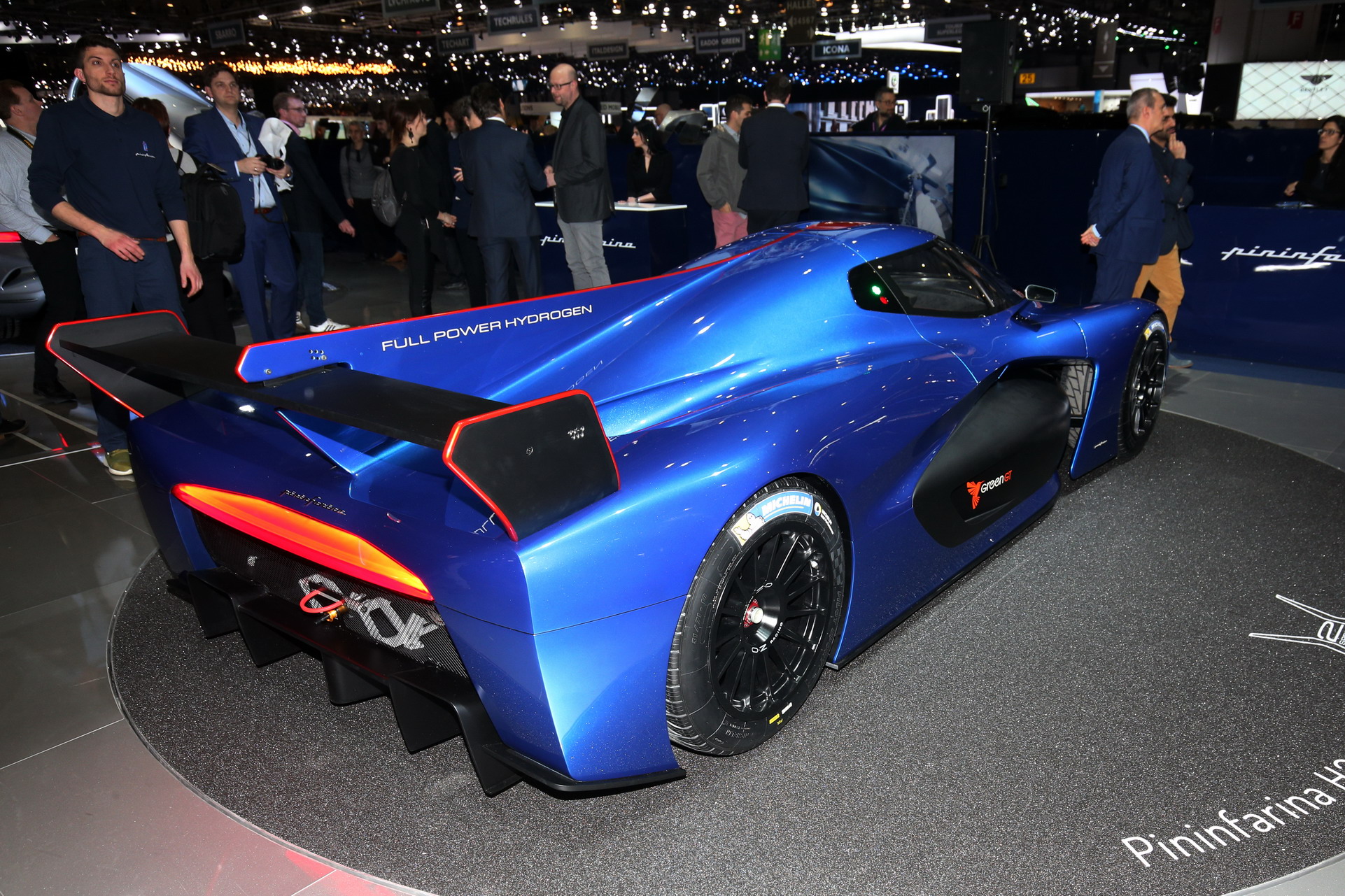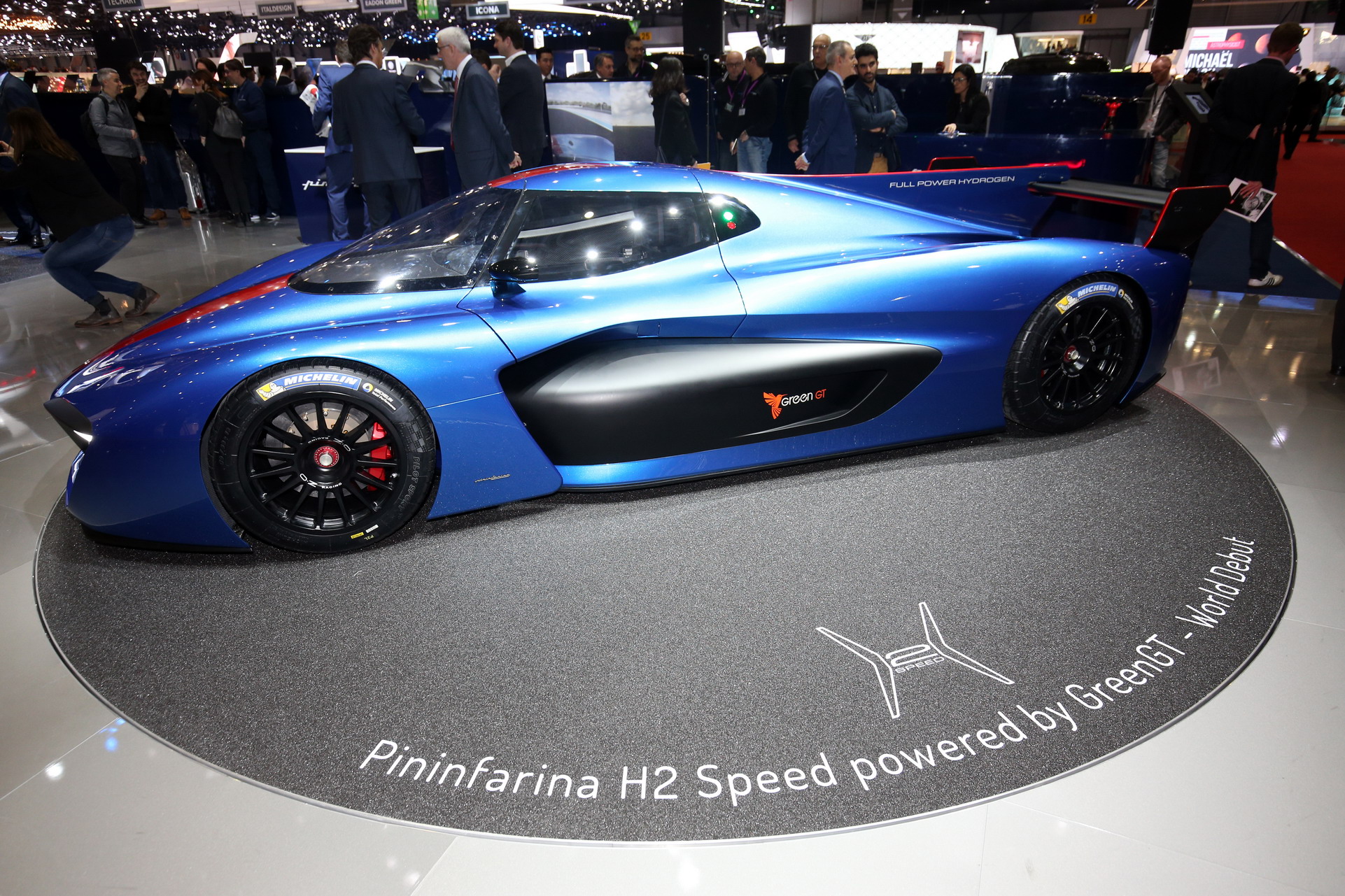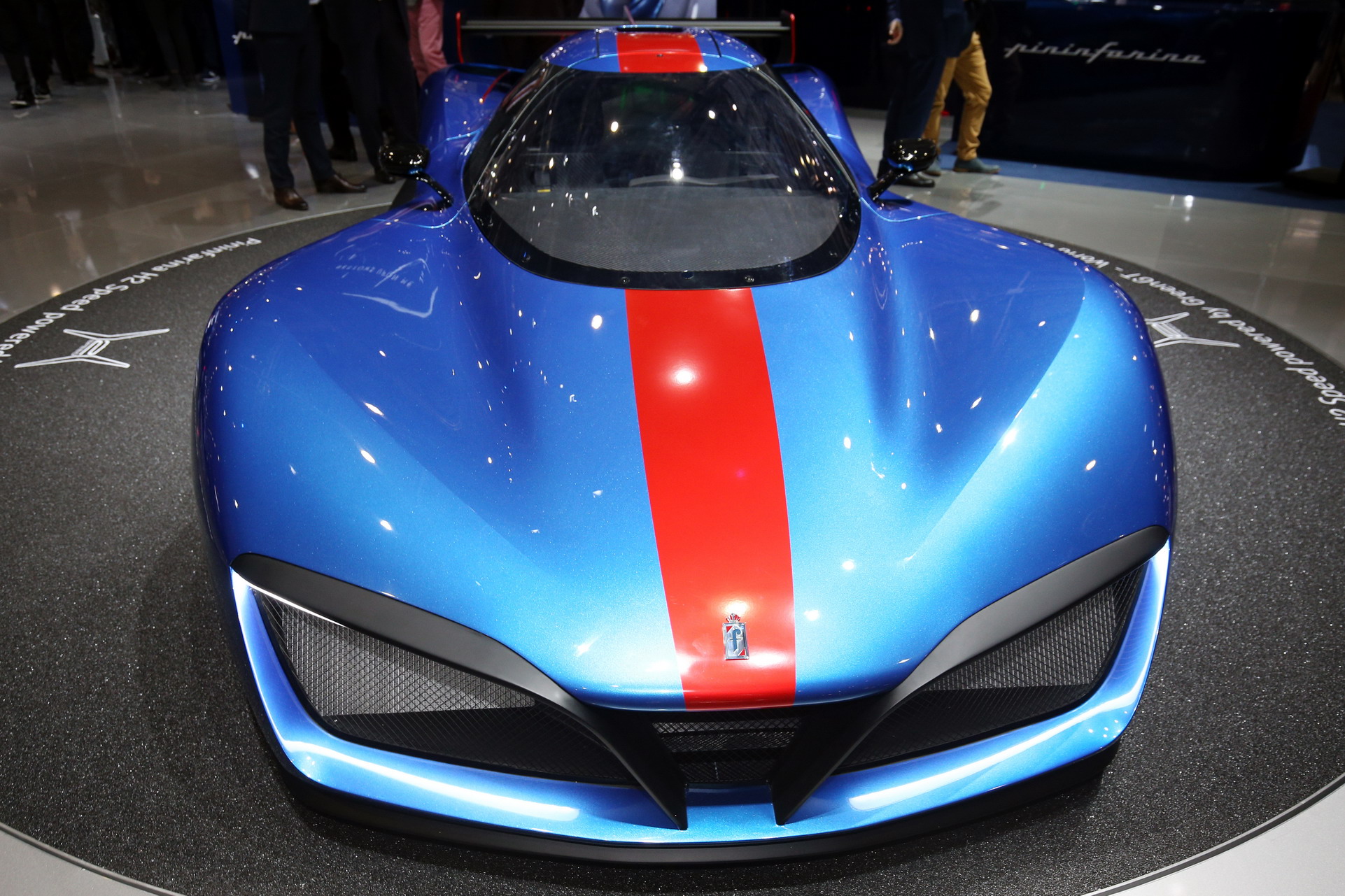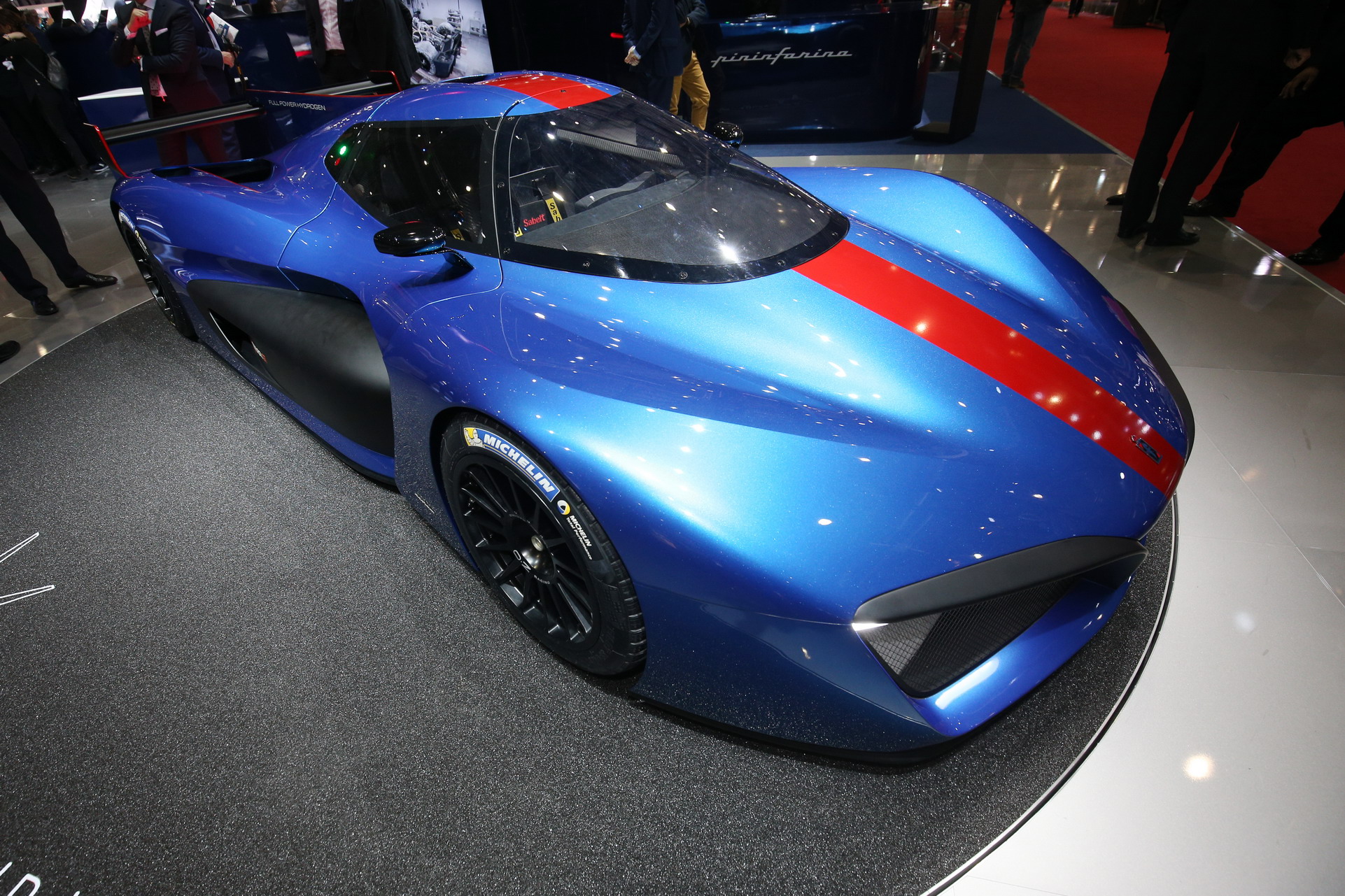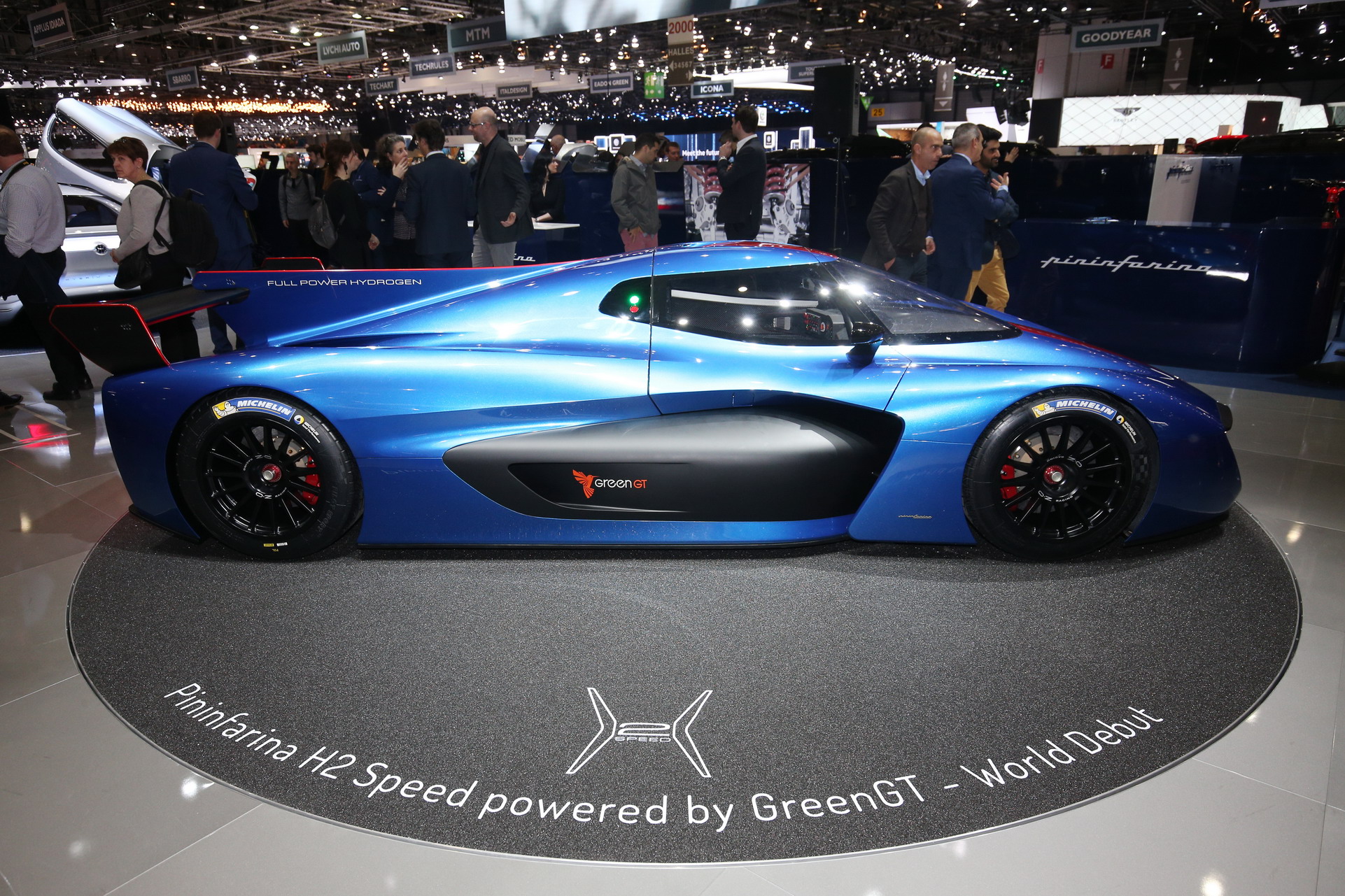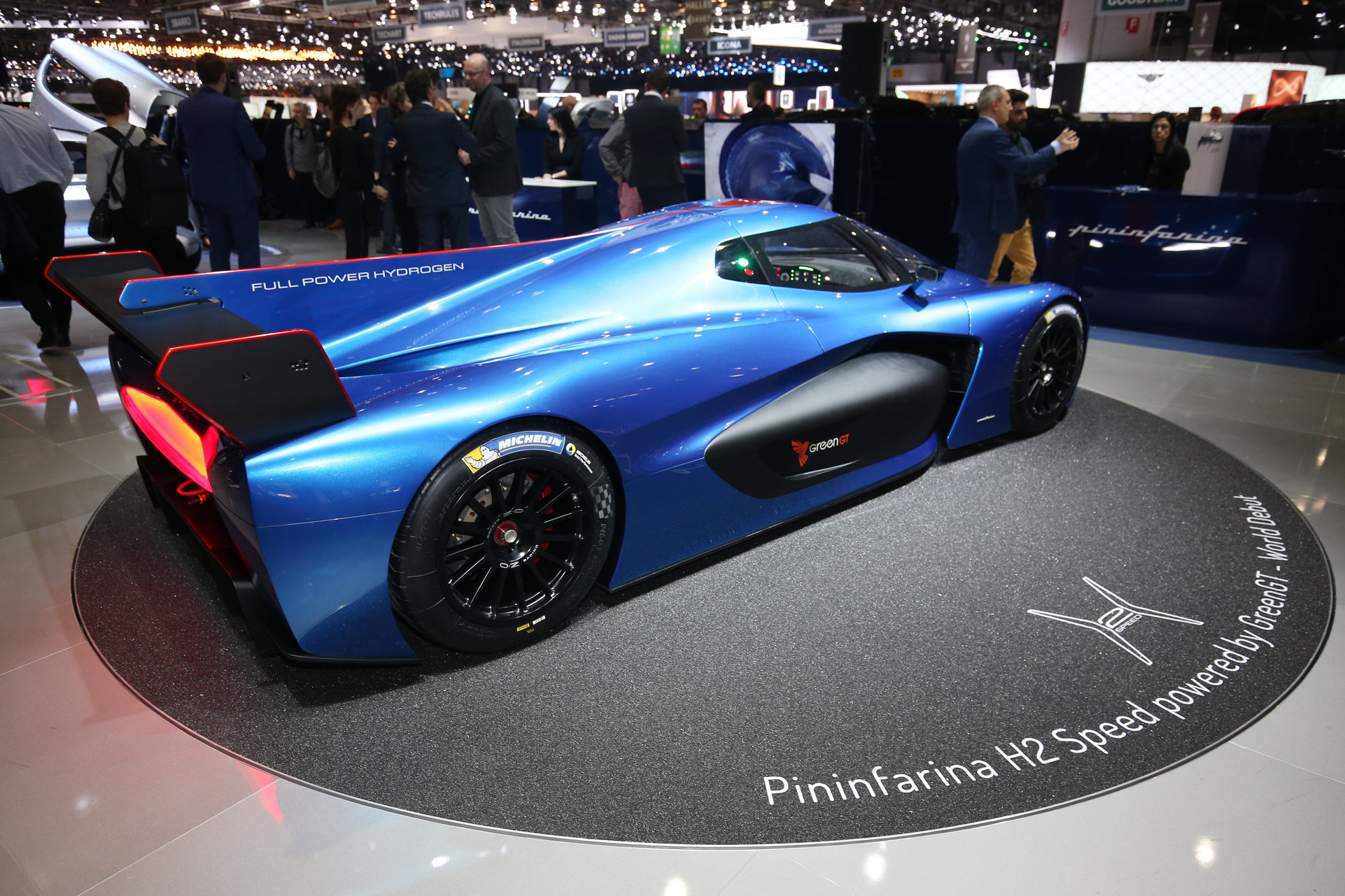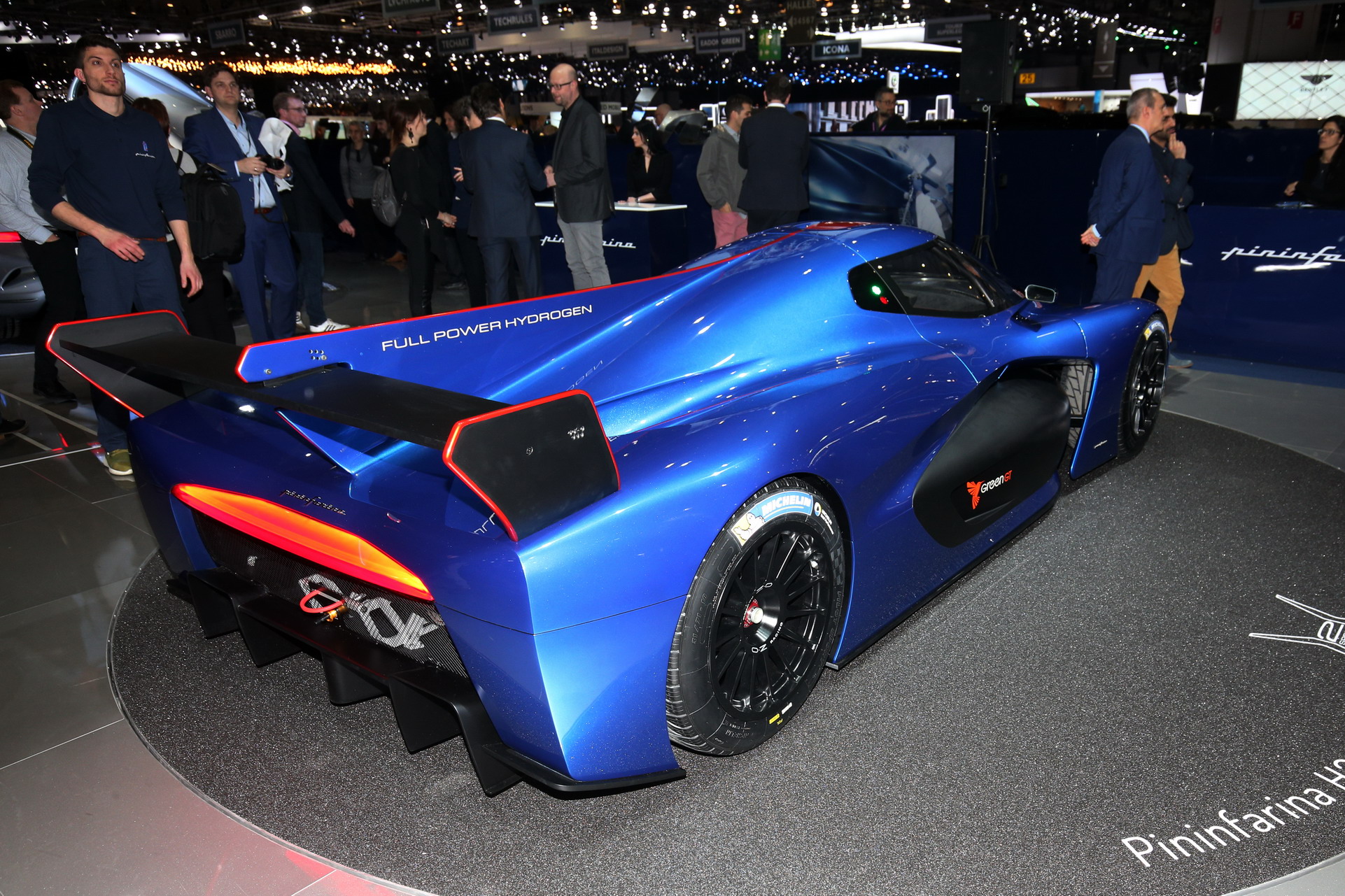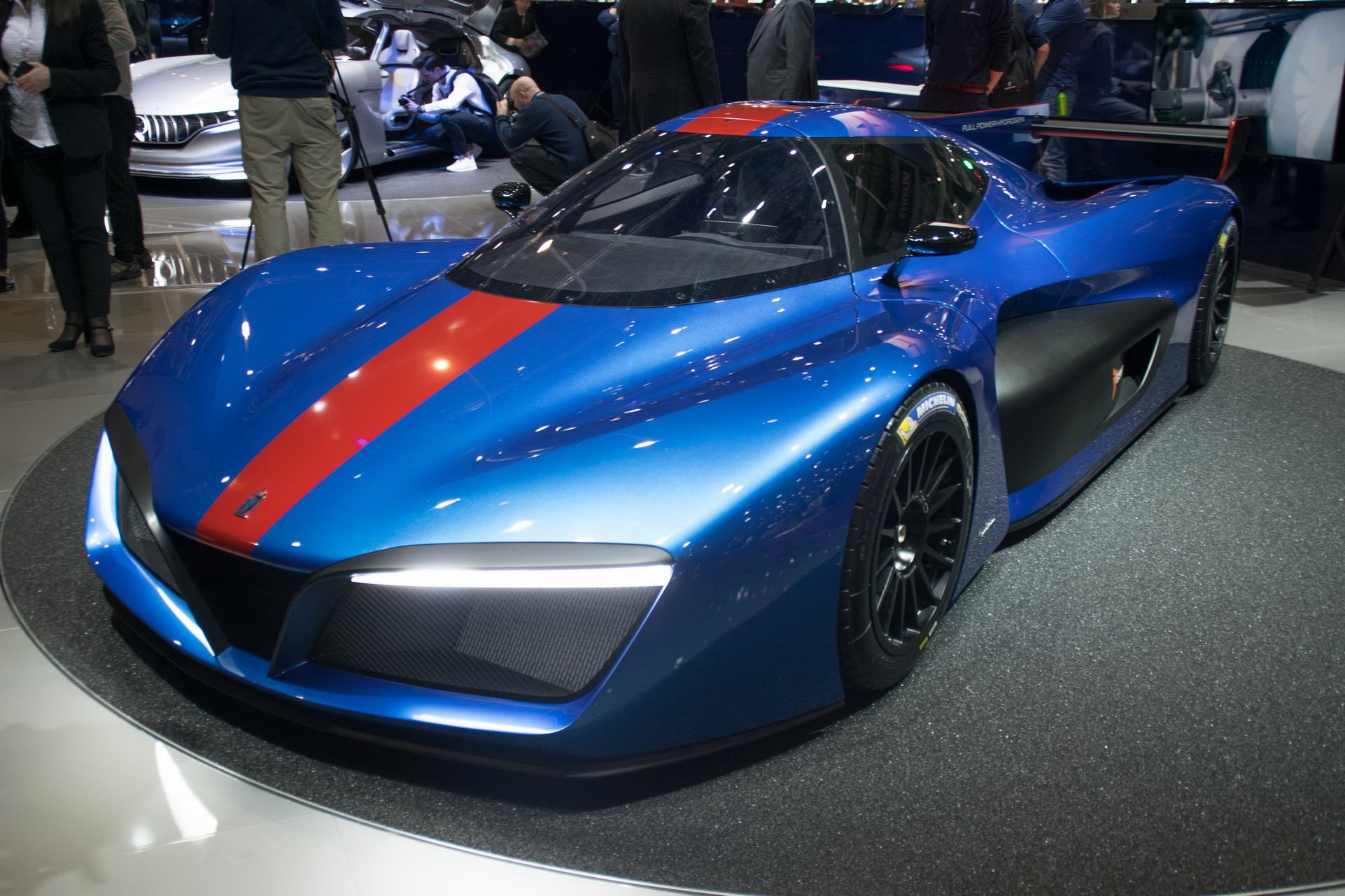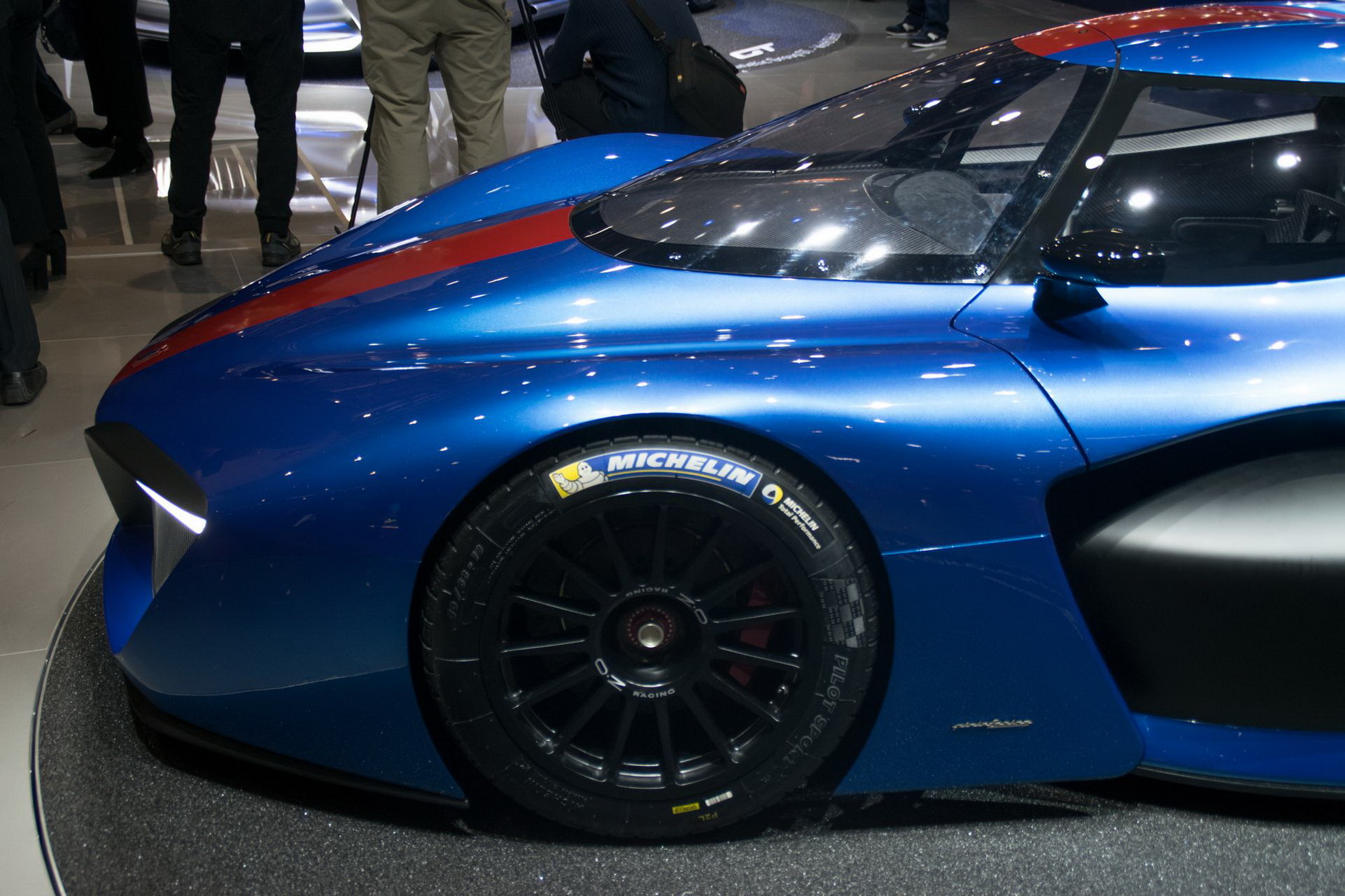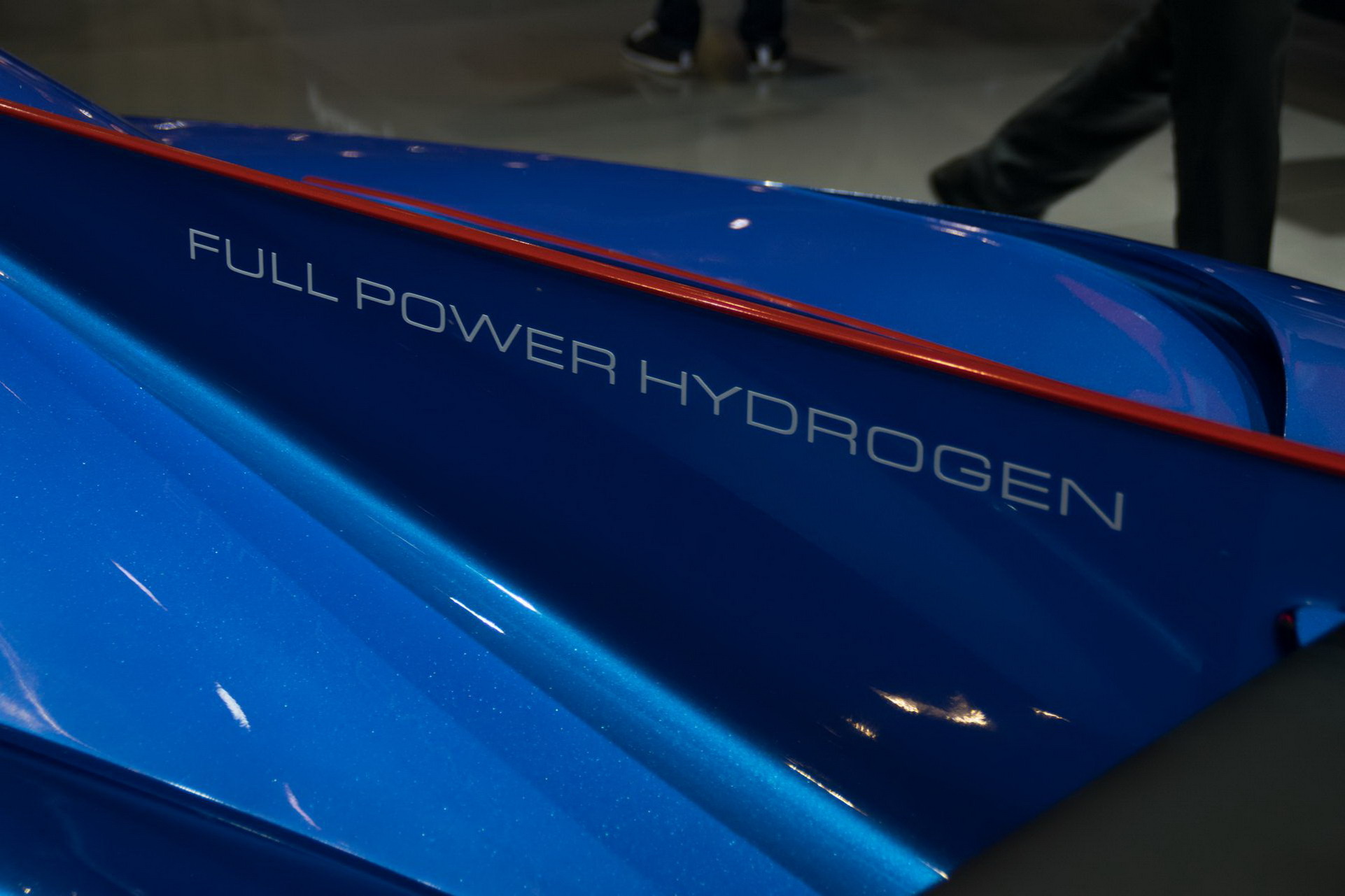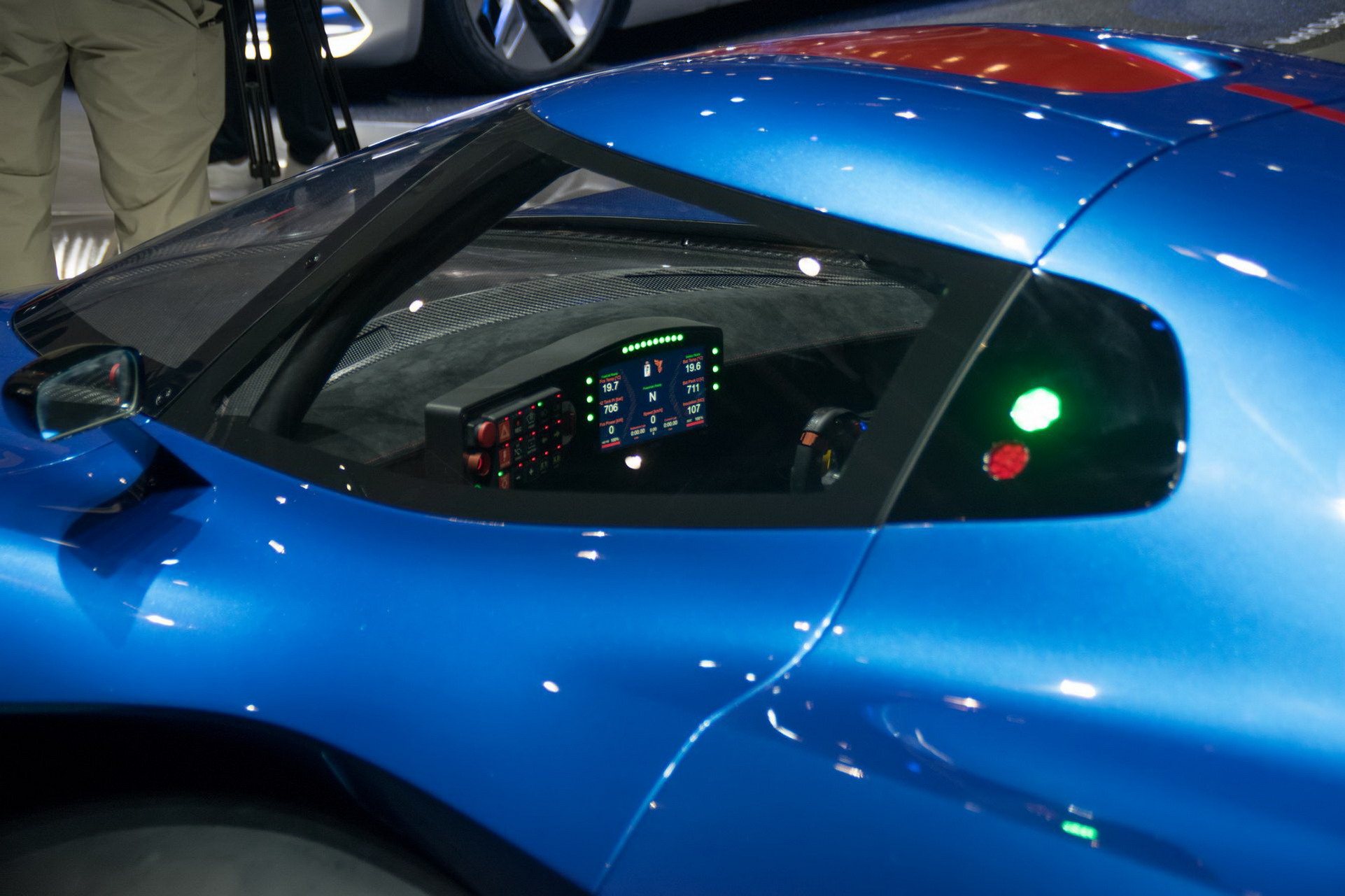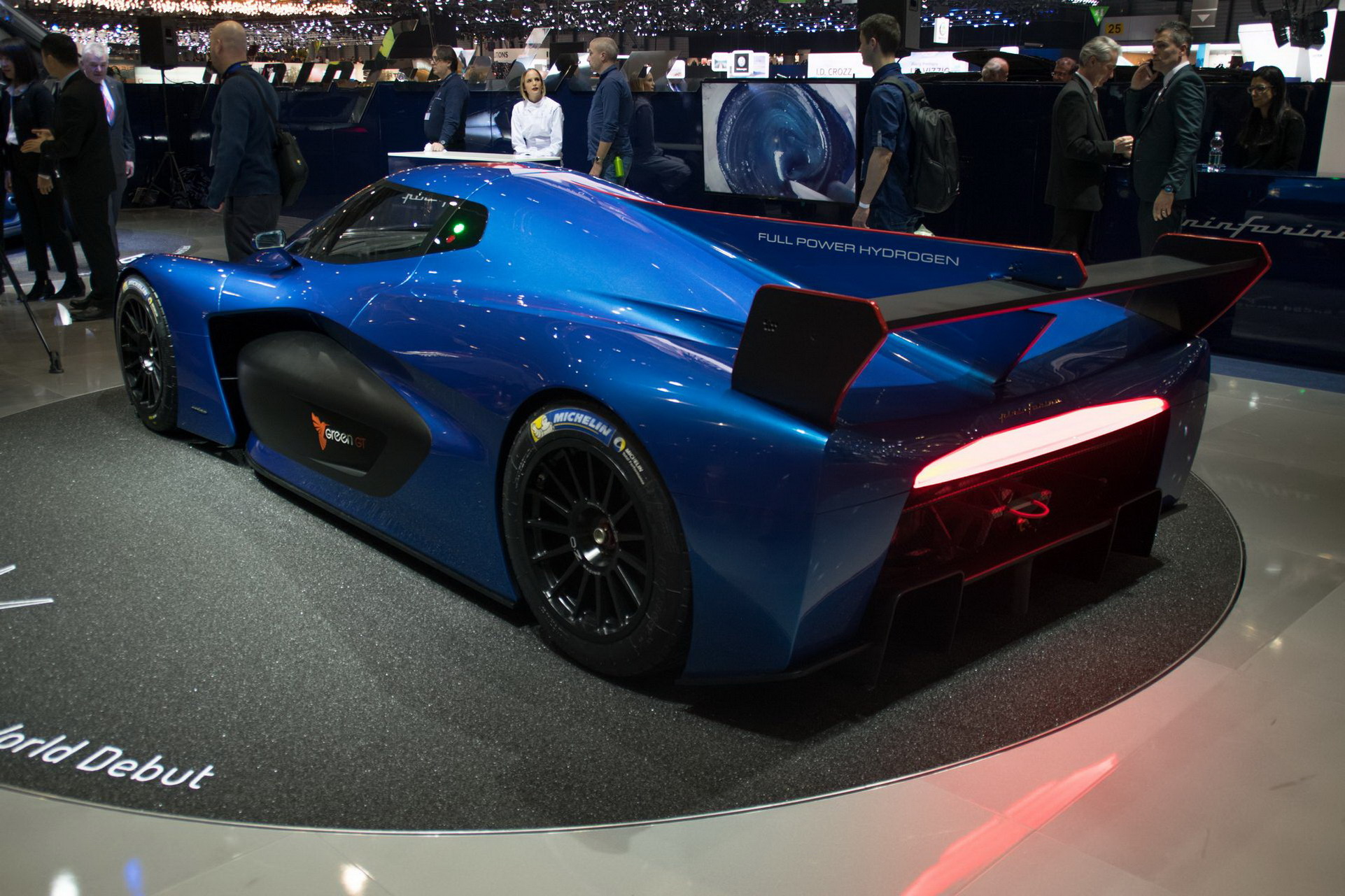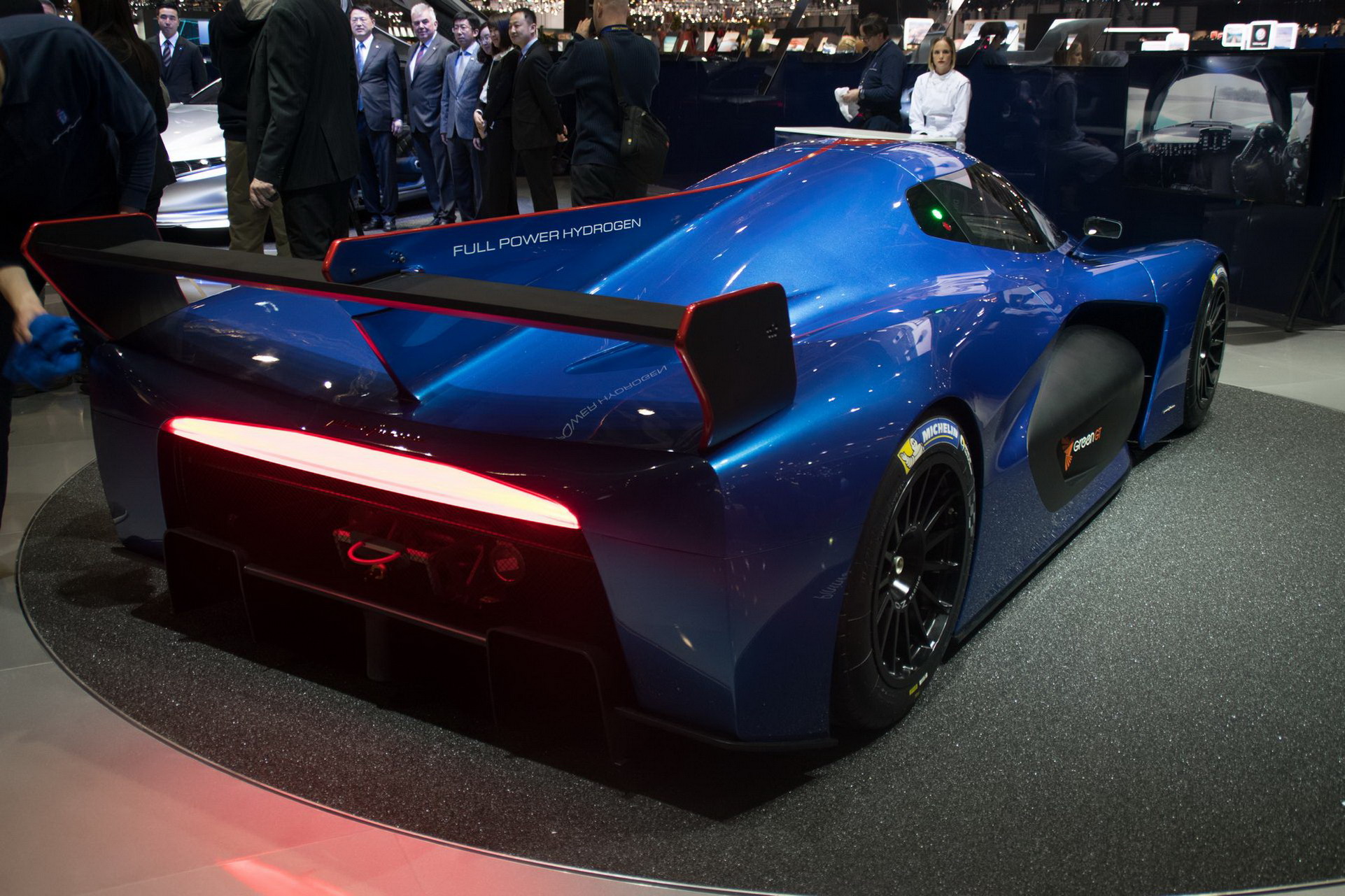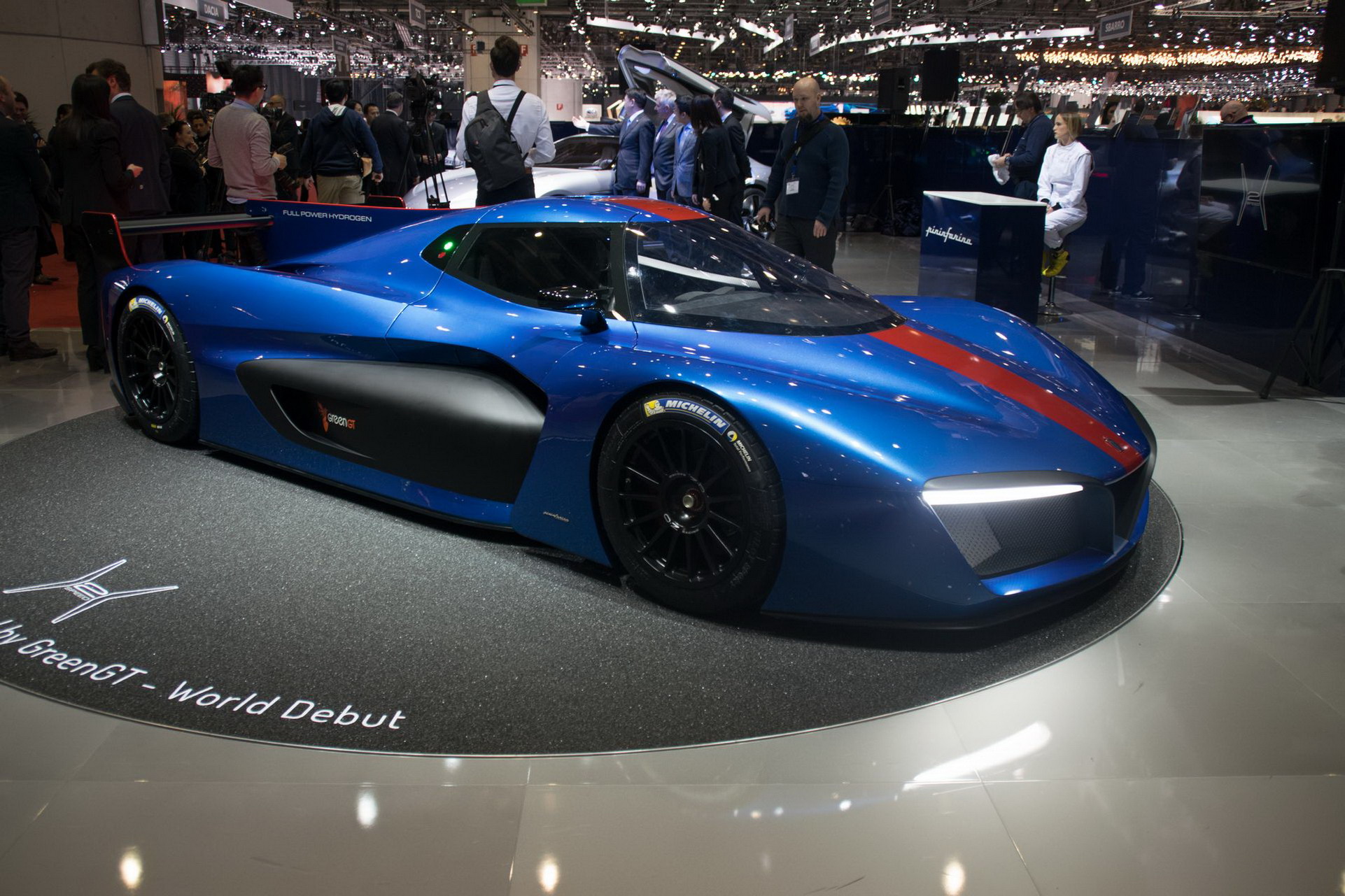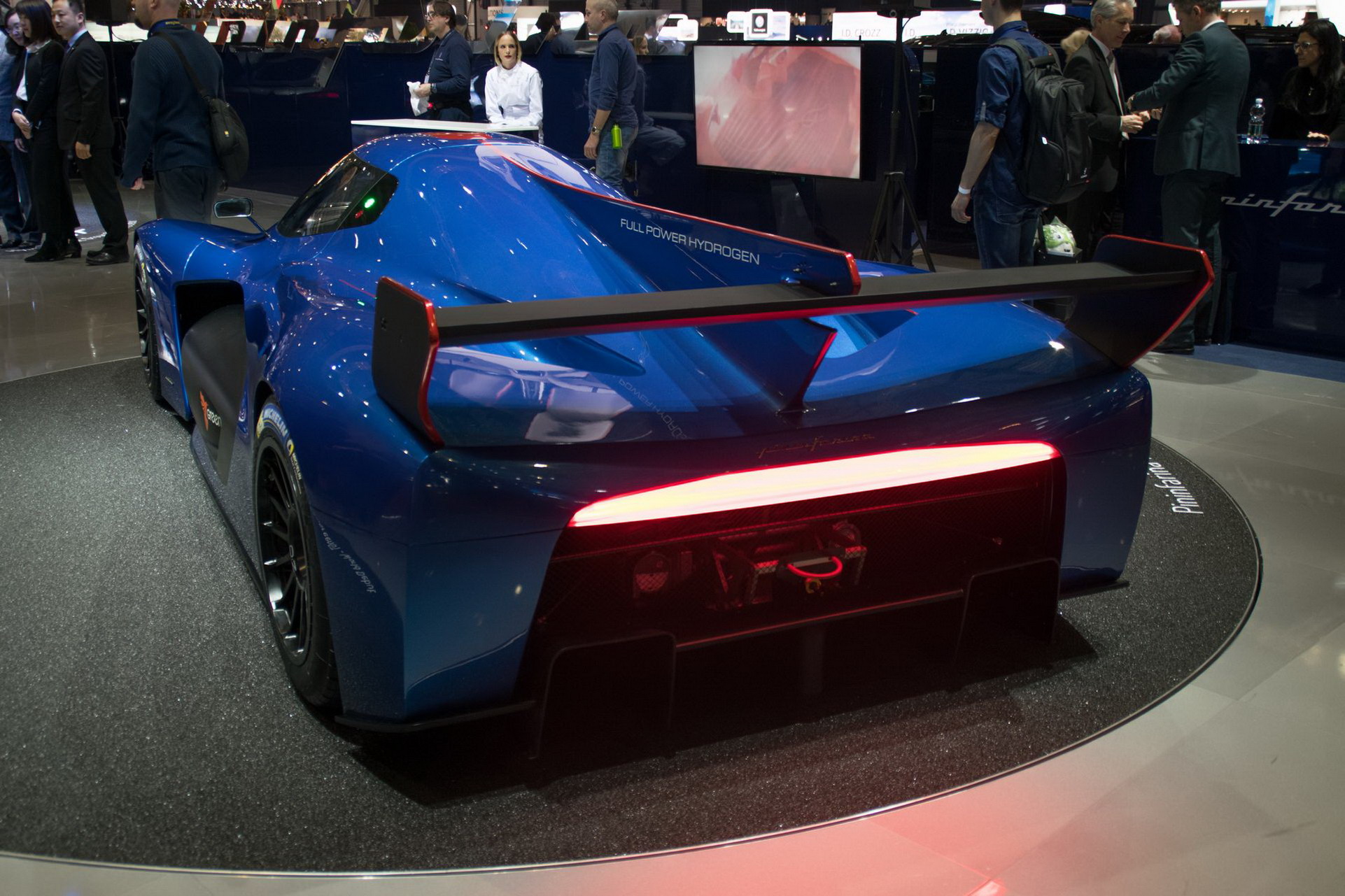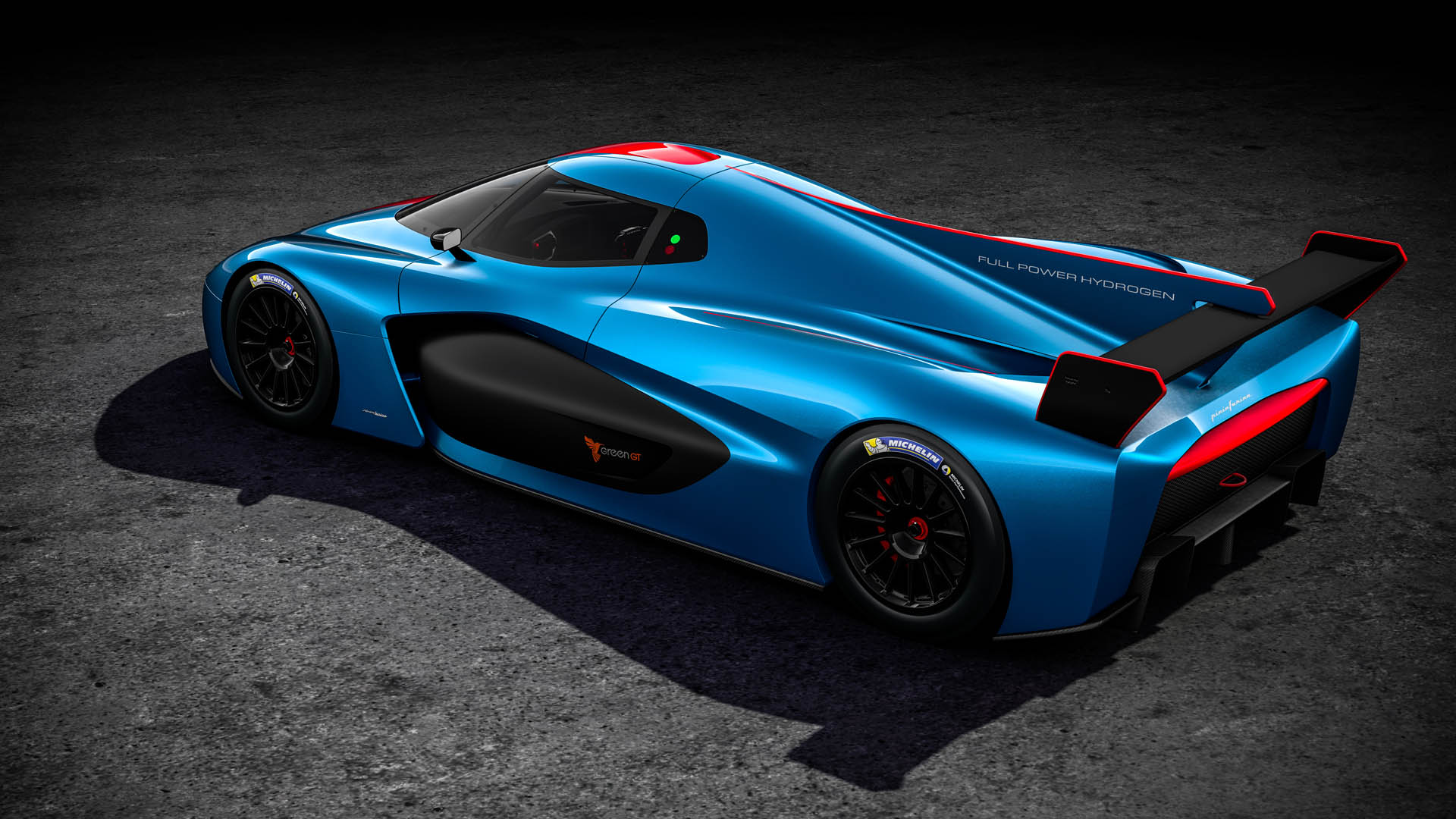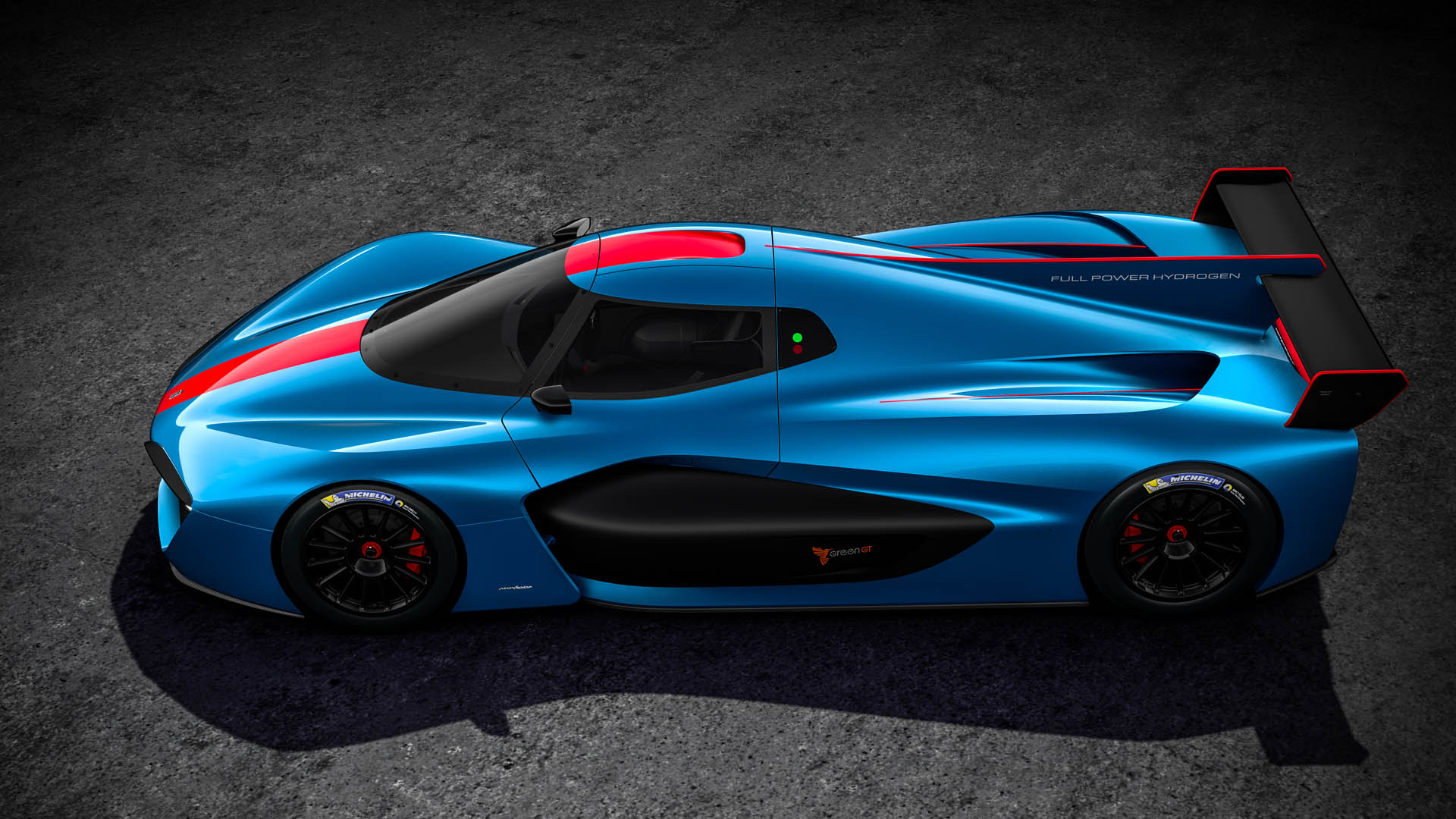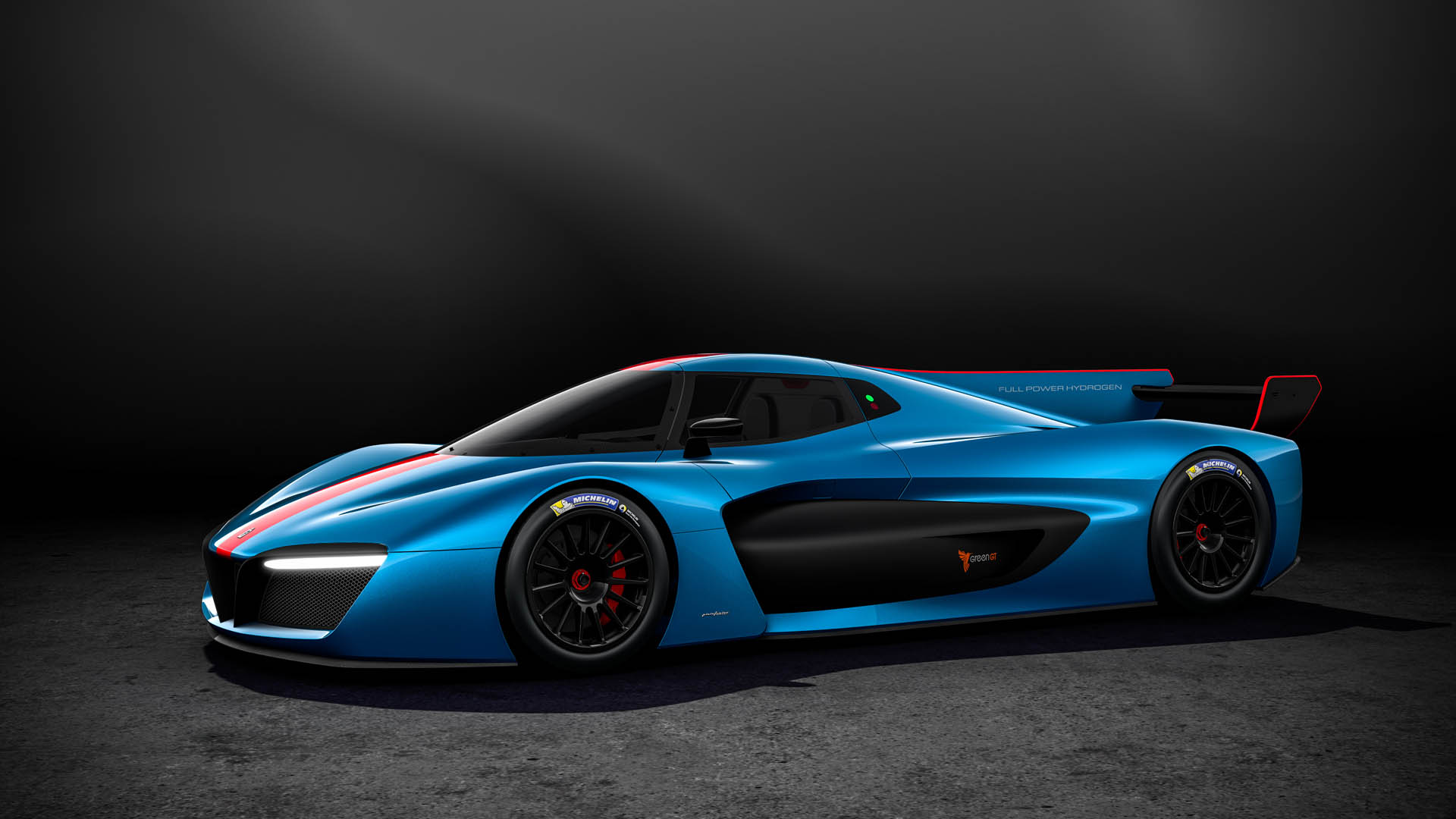Studios like Pininfarina typically design cars (among other things) for other automakers. Like the HK GT concept, for example, revealed today at the Geneva Motor Show. But once in a while, they do something on their own.
Pininfarina captured our imaginations at the show two years ago when it revealed the H2 Speed concept. And now it’s putting it into production.
The hydrogen-powered track car is designed (and will be built) by the famous Italian carrozzeria, with help on the powertrain side from its racing partner GreenGT. The Franco-Swiss outfit has been experimenting with clean propulsion systems for about a decade now, and its expertise will undoubtedly mesh well with Pininfarina’s track record of designing and even producing world-class supercars.
The carbon-fiber chassis underpinning the H2 Speed is derived from a Le Mans prototype, modified with a longer wheelbase and narrower track. It also has a higher-mounted cockpit to let the amateur millionaires (that are bound to buy this high-tech toy) see the track around them better.
The bodywork, of course, is completely fresh. It features a closed cockpit, an air scoop on the roof, giant air intakes on the sides, a horizontal fin to keep it stable, and a big rear wing to help keep it planted to the track surface.
The real novelty, though, is what’s packed into that chassis and bodywork. The advanced hybrid powertrain incorporates four electric motors and a lightweight fuel cell. The system produces 653 horsepower – far more than the original concept. In a package weighing 3,130 pounds (1420 kg with bodywork), that’s enough to send the track car rocketing to 62 mph (100 km/h) in 3.4 seconds, covering 400 meters (an approximate quarter-mile) in 11 seconds before reaching a top speed of 186 mph (300 km/h). Try doing that in a Toyota Mirai or Honda Clarity.
The system drives directly to the rear wheels, with no clutch, shifter, or differential – just a torque vectoring system. All this while emitting nothing more harmful to the environment than water vapor. And it’s faster to top up than an EV, taking just three minutes to top up the hydrogen tank.
Along with GreenGT, Pininfarina worked with other top-notch suppliers to help fill the spec sheet. Michelin supplies its Pilot Sport GT 59M tires for dry conditions, and P2L versions for wet tracks. And Sabelt crafts the lightweight seat shells and six-point harnesses that are placed in the exposed-carbon cockpit, trimmed in Alcantara.
Like what you see? Better act fast, because Pininfarina will only make 12 examples. And though it hasn’t said how much it will charge for each one, you can bet the sticker price will have a lot of zeroes in it.
Post updated with live images from the Geneva Motor Show



